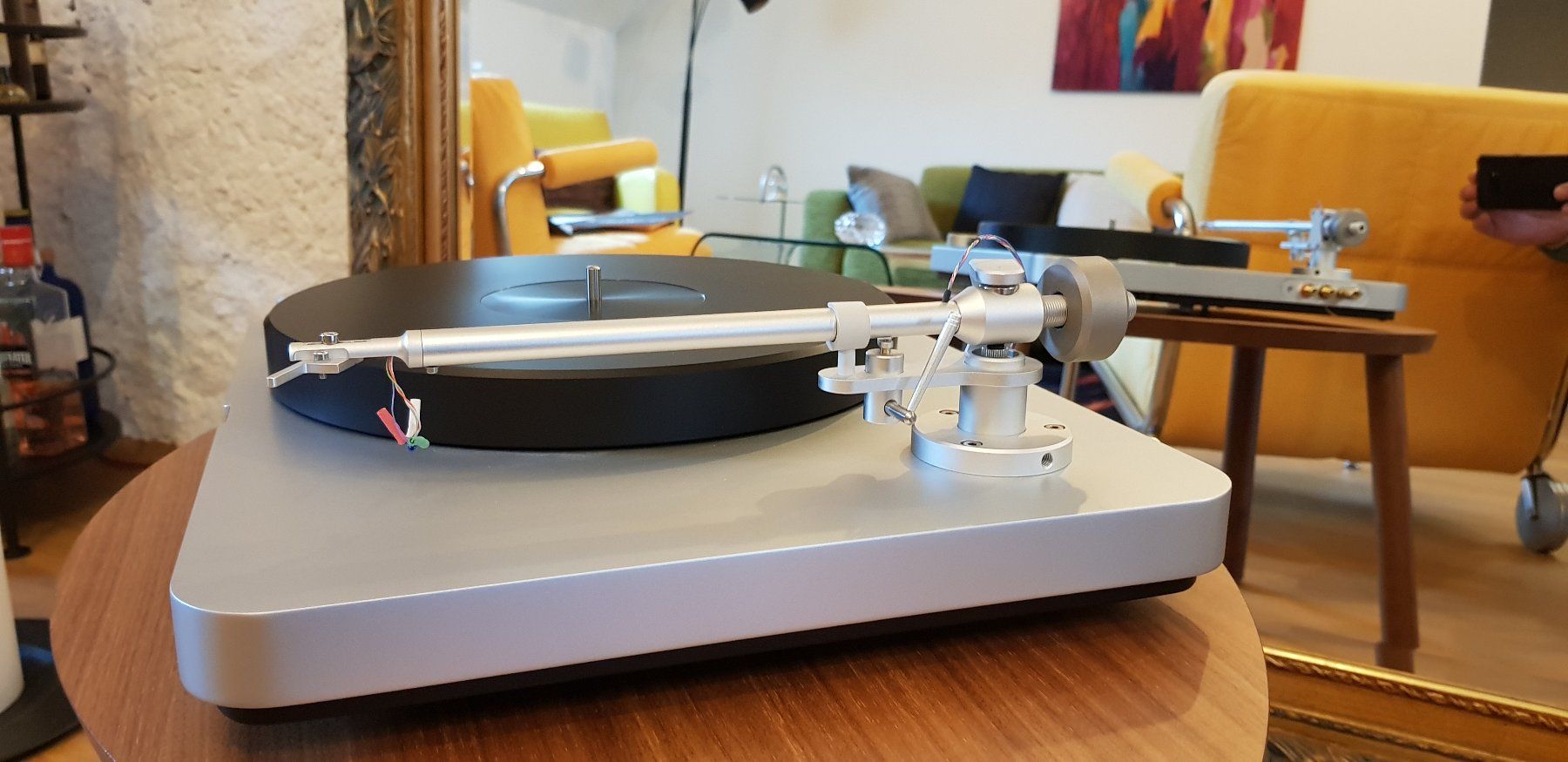Kind of agree with wolf garcia sometimes....
If it sounds 'great', everything is ok?
G'day to all
Given that the listener has at least a good average hearing: If the sound quality from a record sounds 'great' to his ears, the various settings of the tone arm and cartridge (VTF, etc.) are correctly set.
Right or wrong?
Thanks for your inputs.
Cheers, eagledriver
- ...
- 45 posts total
eagledriver_22Switzerland, a land of precision: terrific, he must have a friend who knows about TT setup. Clearaudio ’Clarify’ Tonearm Manual (example, what arm does your friend have?) https://clearaudio.de/_assets/_pdf/manuals/tonearms/CA_Clarify_E+D.pdf?d=1667911999 other arms here https://clearaudio.de/en/products/tonearms.php They recommend a digital gauge to set stylus force (no interference with magnetic bearing, no ’seesaw’ type needed. Presumably the arm was installed by a pro, and is correct. Hopefully the alignment template was provided to your friend. IF NOT, I would request a template from Clearaudio. The manual/template shows everything you need to know about mounting the arm, the cartridges’ overhang; and cartridges’ two null point alignments. arm height a single set screw from the side of the base plate. to align azimuth, there is a set screw in the bottom of the arm tube near it’s head ;;;;;;;;;;;;;;;;;;;;;;;;;;;;;;;;;;;;;;;;;;;;;;;;;; anti-skate is inconveniently located below the plinth. manual page 14 level via adjustable feet must be maintained while in adjustment position with 1 corner ’in outer space’ for access to adjustment screw below. then level re-confirmed when TT moved back to operating location. After confirmation of arm and cartridge: IF the cartridge will not track within the specified range 1.4g to 1.7g something is wrong, EVEN IF it sounds GREAT. Note: anti-skate needs to be reduced to zero from below BEFORE adjusting tracking force; then add tracking force; then back below to ’add’ anti-skate as final setting. Note: ANY subsequent adjustment of tracking force: anti-skate needs to be reduced to zero again, tracking force set; anti-skate set. ;;;;;;;;;;;;;;;;;;;;;;;;;;;;;;;;;;;;;;;;;;;;;;;;;;; basic confirmation: 1. suppose arm mounting and cartridge mounting (overhang/two null points), azimuth, arm height are verified correctly. (or correct them). 2. anti-skate needs to be reduced to zero before step 3. 3. tracking force set to 1.7g max with digital gauge 4. ’add’ anti-skate. a. blank disc method b. Clearaudios’ Trackability Test Record We recommend the Clearaudio Trackablity Test Record available from www.analogshop.de or from your specialist retailer for a professional and perfect anti-skating setting.
|
Thank you for all these detailed information. We are talking about the Verify arm. And yes, the alignment template is available. There is one BIG difference between the anti skating screw/knob of the Clearaudio Concept and the ROWEN TT1: The screw on the latter has no zero marker. So, it will be necessary to figure zero anti skate first in order to be able to set VTF correctly. I will provide an update as soon as I have received feedback from my friend.
|
prior post: "as his tt is a Clearaudio with magnetic tone arm." quick look at Verify Arm, anti-skate, pg 15, also from below. https://clearaudio.de/_assets/_pdf/manuals/tonearms/CA_Verify_E+D.pdf?d=1667911999 when they say counterclockwise is weaker, I would interpret that -5 full turns is fully weak/ZERO Why did you mention Rowen TT1? Is it a variation of Clearaudio? Made for them by Clearaudio? https://www.rowen.ch/en/data/rowen_tt1.php Confusion: Clearaudio has a TT1 arm .You don’t need anti-skate on Linear Tracking Tonearms https://clearaudio.de/_assets/_pdf/manuals/tonearms/CA_Statement_TT1_E.pdf?d=1671461176 |
Just one teeny, weeny thing: Back up the thread, Elliott recommended to set AS to equal VTF or some high percentage of VTF. With all respect to E, most agree that the AS force should be set to some small fraction of VTF. In another concurrent thread, you can read where Mijostyn has calculated that AS should be precisely 11% of VTF. I am not necessarily in agreement with his dogmatism on the subject, especially since he built a Rube Goldberg device to measure AS that none of the rest of us has, but I do agree that he is in the ballpark. (Wally make an AS measuring device, too.) There are a lot of ways to set AS, but what I do is to first listen to a representative LP without any AS. I typically hear distortion in the R channel with no AS. I then add AS in very tiny increments only until that distortion disappears. So you could say I do it by ear. But VTF = AS in magnitude is definitely too much AS. One problem I have with tonearms that have a dial setting for AS, usually marked in numbers from 0 to 5, or something like that, is that we don't know what those numbers mean. The dial setting is typically found where AS is done magnetically. Do the numbers refer to "grams" of AS? Or are the numbers to be correlated with grams of VTF, where 2g of VTF is to correlate with setting the dial to 2. Because 2g of AS, which is applied at the pivot is not equal to 2g applied at the headshell. To me this is another reason to do it by ear. |
- 45 posts total


